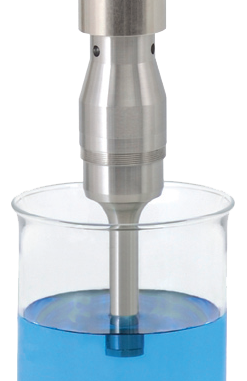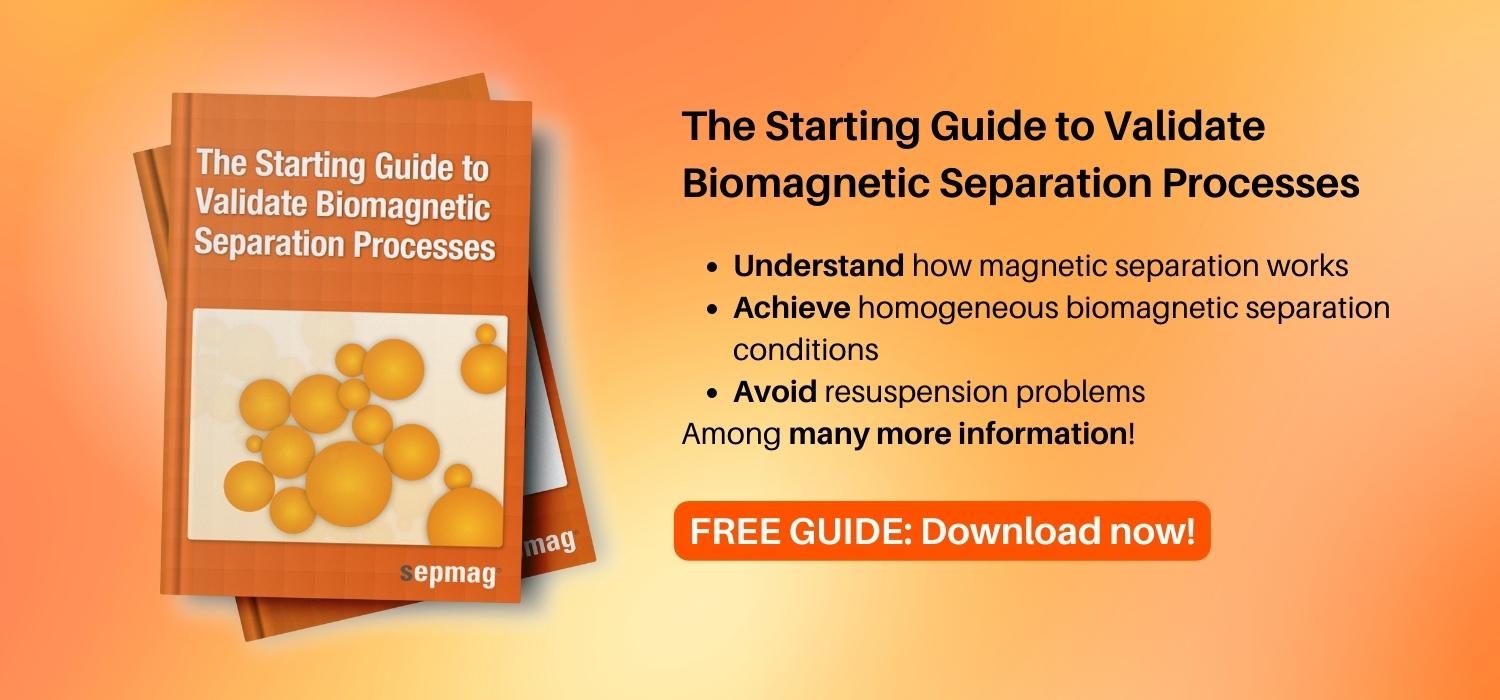There are no easy ways to bypass steps or simplify the production process of magnetic bead separation. Steps in the production process that seem easy or easily bypassed, turn the production into a nightmare if one attempts to take short cuts. One of these seemingly easy steps is the resuspension step.
Resuspension is relatively straightforward, but only if the magnetic beads have been treated properly throughout the process. If the beads are not treated gently, they will aggregate more easily and one will have difficulties during the separation steps.
This post is about magnetic bead separation and how to validate this process. If you are interested in this topic, and are willing to learn more about it, download our Free Guide The Starting Guide to Validate Biomagnetic Separation Processes:
Why does magnetic bead aggregation happen?
What is the explanation behind magnetic bead aggregation? If one uses traditional magnetic separators, a magnetic field dependent on distance from the magnet is created. Beads farther from the magnet will be harder to attract because of the low magnetic force in which they exist. This results in significant material loss and/or excessive separation time.
On the other hand, beads close to the magnet will experience excessive magnetic force for long periods of time. Bead exposure to high magnetic forces results in bead aggregation (often irreversible), in a loss of activity and in resuspension problems. Laborious extra sonication steps are often required to rectify the aggregation.
_17.20.35.png)
Often, scientists try to increase the force reaching beads that normally experience low magnetic forces by adding permanent magnets. Unfortunately, this increases aggregation problems because it increases the force on the beads that exist closer to the magnet much more than it increases force on beads farther from the magnet.
Luckily, there are new developments in biomagnetic separation that allow scientists and engineers to apply optimum magnetic force to all beads equally. This ensures gentle, efficient and homogenous biomagnetic separation. It also avoids aggregation and resuspension problems. With a precision magnetophoresis system, all beads are exposed to a homogenous magnetic force.
It is important to take advantage of the new biomagnetic separator technology in order to achieve the best production process possible.
If you found this article interesting and want to get a deeper insight in the topic of magnetic bead separation, make sure to check these articles from our blog:
- The 4 wrong ways to improve magnetic separation time (and 1 way to do it correctly)
- Ensure 100% consistency from lot to lot
- The 2 ways you can demagnetize your biomagnetic separation device





